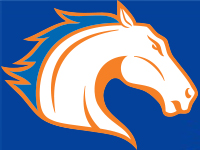Colombia (9/23/15)
- Articles
-
Consociational Democracy: The Case of Colombia, Robert H. Dix, Comparative Politics, Vol. 2, No. 3 (Apr., 1980), pp. 303-321
- Another History of Violence: The Production of "Geographies of Terror" in Colombia's Pacific Coast Region. Ulrich Oslender. Latin American Perspectives, Vol. 35, No. 5, pp. 77-102. Forced displacement.
- Colombia at War: The Search for a Peace Diplomacy. Juan Gabriel Tokatlian. International Journal of Politics, Culture, and Society, Vol. 14, No. 2 (Winter, 2000), pp. 333-362. Colombian foreign policy and domestic stability.
- Colombia's Two-Front War. Rafael Pardo. Foreign Affairs, Vol. 79, No. 4 (Jul. - Aug., 2000), pp. 64-73. Drugs and internal stability
- Politicians and Criminals: Two Decades of Turbulence, 1978-1998. Gutierrez Sanin. International Journal of Politics, Culture, and Society. 2000.
- Major Themes
- Oligarchic Democracy
- Institutionalized Violence
- Two political parties dating from 1863. Conservatives
(Bolivar, centralized government, pro-Church, and limited voter rights) and
Liberals (Santander who was eventually a political antagonist of Bolivar,
de-centralized government, more secular, and broadened suffrage). Both
elitist.
- Two “civil wars” between the parties.
- Thousand Days War (1899–1902) cost
an estimated 100,000 lives.
- "La Violencia" (The Violence) of
the late 1940s and 1950s.
- 1910-1930—Conservatives dominate an
open and competitive system. Some Liberals in the cabinet.
- 1930—Difficulties from the Depression
bring Liberals to power for 16 years.
- 1934-38—Alfonso Lopez Pumarejo’s
“Revolution on the March.” Pro-labor, increased state role, and social
reform.
- Laureano Gomez (Conservative)
heads reactionary element
- 1942-45—2nd Lopez
term. Gomez Conservatives force Lopez out.
- 1946 election. Populist and
Liberal “demagogue Jorge Gaitan vs. Conservative Mariano Ospina Perez.
Ospina Perez wins.
- Gaitan (favored to win 1950
elections) assassinated April, 1948. Crisis begins with riots in Bogota
(bogotazo) killing thousands. Sparks La Violencia
- 1948-58—La Violencia—200-300,000 lives lost
- Ospina tried state of siege and coalition with
Liberals. But Liberals quickly withdraw. Congress closed and
“democracy” ends in Nov., 1949.
- 1950-53, Laureano Gomez—quasi corporatist, but not
populist. Violence between the two parties continues
- 1953 military coup. 1953-57, military
dictatorship (only one in 20th century) of Gustavo Rojas
Pinilla. Some success in abating the violence. But refused return to
democracy
- 1957—temporary military junta ousts Rojas
- 1958-1974—National Front
- Both parties agree on a “sharing” of power.
Presidency would alternate every 4 years and parity in all other
electoral posts. Essentially no inter-party competition. Guaranteed
equity between the parties
- Actually, the 1886 Colombian
constitution — in effect until 1991—required that the losing political
party be given adequate and equitable participation. The current 1991
constitution does not have that requirement, but subsequent
administrations have tended to include members of opposition parties.
- 1958-62, Alberto Lleras Camargo (Liberal)
- 1962-66, Guillermo Leon Valencia (Conservative)
- 1966-70, Carlos Lleras Restrepo (cousin of Lleras
Camargo)
- 1970-74, Misael Pastrana (Conservative) seen as
particularly corrupt (Rojas ran as a third-party candidate—protesting
the National Front). M-19 guerrillas formed partially as a reaction to
1970 election.
- 1974-78. National Front ended, but considerable
parity continued. Alfonso Lopez Michelsen (son of Lopez Pumarejo and
Liberal) defeats Alvaro Gomez (son of Laureano Gomez) in battle of elites.
- 1978-82. Liberal Julio Cesar Turbay Ayala elected.
But widespread abstentions.
- 1982-1986. Conservative Belisario Betancur elected.
1984 cease fire with guerrillas.
- Three guerrilla groups
- FARC, since 1964, peasant army, largest in Latin
America (6-8,000)
- ELN, since 1964, liberation theology roots
- M-19, since 1970
- Illegal drug trade evolving, 1970s
- 1985 M-19 storms Palace of Justice
- 1986-1990, Virgilio Barco, Liberal
- 1990, Bernardo Jaramillo, presidential
candidate of UP (leftist party with connections to FARC and Communist Party)
murdered by para-military forces
- 1990-94, Cesar Gaviria, Liberal.
1993, Pablo Escobar (Medellin drug-lord) killed in police shoot-out.
- 1994-98, Ernesto Samper, Liberal.
Tainted by charges of corruption (drug traffickers contributions to
campaign).
- 1998-2002, Andres Pastrana,
Conservative. Committed to a peace process.
- 2002-2006, 2006-2010. Alvaro Uribe,
“independent” Liberal. Popular after peace process fails. Father had been
killed by guerrillas.
- 2010-2014, Juan Manuel Santos, Social
Party of the National Unity (followers of Uribe). Some overtures to peace,
but also raids against FARC.
- Continued problems with violence
- Solutions
IDENTIFY
- Political Parties: Conservative and Liberal
- 1930-46, Liberals, Lopez Pumarejo’s “Revolution on the
March.”
- Laureano Gomez
- 1946 election
- Jorge Gaitan
- LaViolencia
- Ospina Perez, democracy ends
- Laureano Gomez, again
- Rojas, military coup
- 1958-64, National Front
- M-19, FARC, ELN
- Drug trafficking, Pablo Escobar
- Cesar Gaviria
- Ernesto Samper
- Andres Pastrana
- Alvaro Uribe
- Juan Manuel Santos
- Institutionalized violence
- Elitist/Oligarchic democracy
|



